Holiday deals in the Costa Brava
Discover the best holiday deals in the Costa Brava at the best price. Enjoy the most incredible beach destinations by staying at a hotel in Blanes, Lloret de Mar, or Roses. Get ready for your next holiday!
Find the best holiday deals by the beach
Not sure where to go on holiday? Looking for the best beachfront hotel deals? Don’t miss the best hotels on the coast near Barcelona and Valencia. Enjoy the best of the Mediterranean!
Holiday deals in the Costa Brava
When planning a getaway to the shores of the Mediterranean, you’ll undoubtedly think of the coast of Girona and everything this magical destination has to offer. Postcard-perfect beaches dotted with pine trees and cliffs, charming villages, fishing villages where time seems to stand still, the perfect climate, and delicious Catalan cuisine. With our holiday deals to the Costa Brava, you can discover all of this at incredible prices.
Although this Catalan region has always held a high profile, not everyone knows the origin of its name. In an edition of the now-disappeared newspaper La Veu de Catalunya on September 12, 1908, poet and writer Ferran Agulló first referred to the stretch of coast between the mouth of the river Tordera in Blanes to Portbou on the border with France, as ‘la Costa Brava’. This later caught on, with this name still used to this day.
Between the rock of Sa Palomera (Blanes) and the last Catalan town before entering France, the Costa Brava extends 158 km in a straight line and 256 km in total, with an area of 3,611.9 km². It is framed by the Costa Roja del Rosselló and the Costa del Maresme and includes three regions: La Selva, Baix Empordà, and Alt Empordà.
Cheap holidays in Costa Brava
Family stays in Costa Brava
Luxury deals
How to get to the Costa Brava?
For some international tourists, the gateway to Costa Brava is the small airport of Girona-Costa Brava. To get into town, you can take the 605 bus, which connects the Girona airport with some of the main tourist towns of the Costa Brava, such as Tossa de Mar, Lloret de Mar, and Blanes.
Another way to get to the Costa Brava is to make the journey from the city of Barcelona. Although there are several options, the most comfortable is to take a direct bus, such as those offered by the Sarfa company, which leaves from the Barcelona Nord station and reaches towns such as Lloret de Mar, Tossa de Mar, Sant Feliu de Guíxols, Platja d’Aro, Palafrugell, Roses, and Cadaqués. From this same station, shuttle buses also depart to Girona airport.
You can also take Renfe commuter trains on the R1 line from the Barcelona train stations of Sants, Plaça de Catalunya, Arc de Triomf (next to the aforementioned bus station), and El Clot-Aragó, which go to Blanes. It is also possible to take local trains to the city of Girona or to Figueres, from where the Costa Brava can easily be reached by bus or car.
The climate in the Costa Brava
The Costa Brava has a Mediterranean climate, although it is somewhat cooler than in other parts of the coast of Catalonia due to the north wind, the Tramuntana, which blows stronger in spring and autumn. Nevertheless, temperatures are mild throughout the year, with daytime temperatures around 25°C and above between June and September. Hence, this period is perfect to make the most of our holiday deals in the Costa Brava.
This region has around 210 days of sunshine a year and receives the most rainfall between September and November.
What to see in the Costa Brava
Many centuries before Agulló wrote about it in the paper, the Costa Brava was an area of passage and settlement by various peoples and cultures. This is reflected in a large number of historical remains and monuments still present in this area: sites, Greco-Roman ruins, medieval complexes, neoclassical and modernist buildings, and more. The figures speak for themselves: in total, there are more than 150 historical sites that you can discover during your holiday to the Costa Brava.
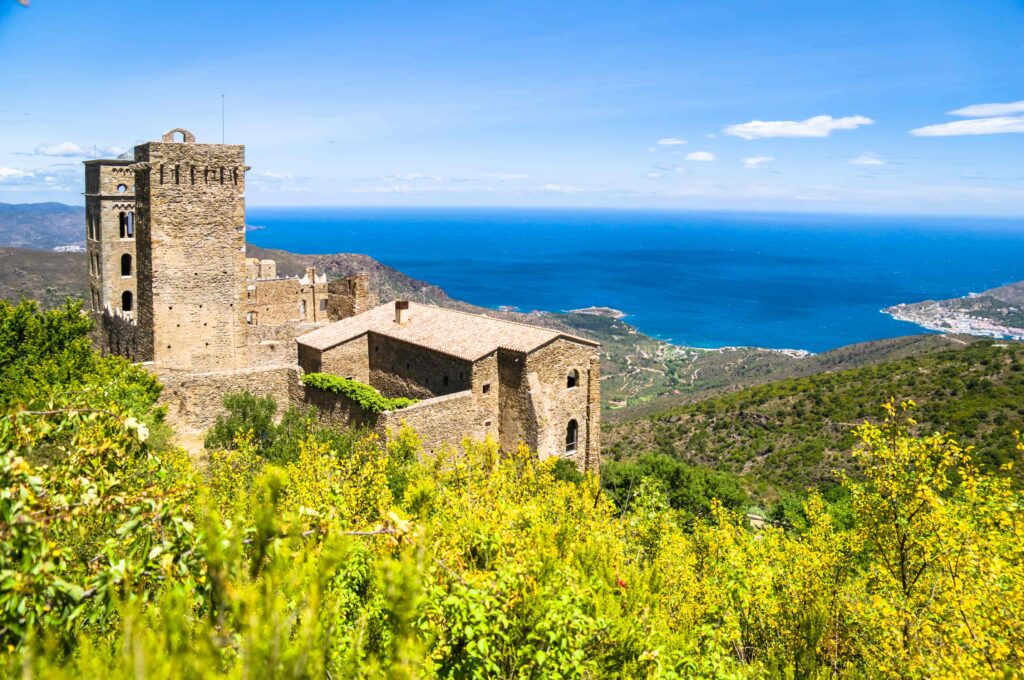
Greco-Roman ruins
The oldest historical remains are those located in the Iberian settlement of Ullastret, undoubtedly the most important of its kind in Catalonia. It is also worth visiting the only two sites of ancient Greece in Spain: those of Empúries and the Citadel of Roses, where there are also Roman remains. In the Citadel of Roses also stand the remains of a Lombard Romanesque monastery from the eleventh century. However, Romanesque art on the Costa Brava is best exemplified in the monastery of Sant Pere de Rodes, dating from the 10th century. Other Romanesque locations of interest are the collegiate church of Santa Maria de Vilabertran, with a beautiful cloister, and the monastery of Sant Quirze de Colera.
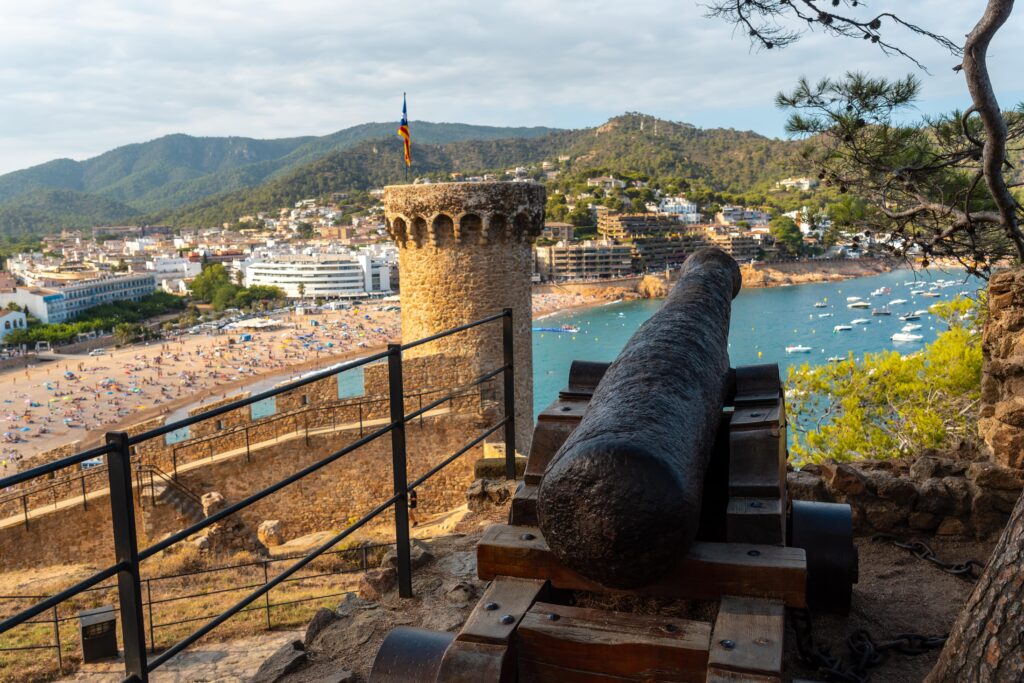
Medieval remains
The medieval footprint can also be found in some inland towns. For example, Girona’s Barri Vell (‘Old Quarter’) is home to one of the best preserved Jewish quarters in the country, as well as the Cathedral of Santa Maria, which has the widest Gothic nave in the world. Other magnificent medieval villages include Monells – where the comedy Ocho apellidos catalanes was filmed – Peratallada, Pals, Palau-Sator, and the picturesque Vila Vella de Tossa de Mar, which captivated the French painter March Chagall and Ava Gardner herself, who was there in 1950 to star in Pandora and the Flying Dutchman.
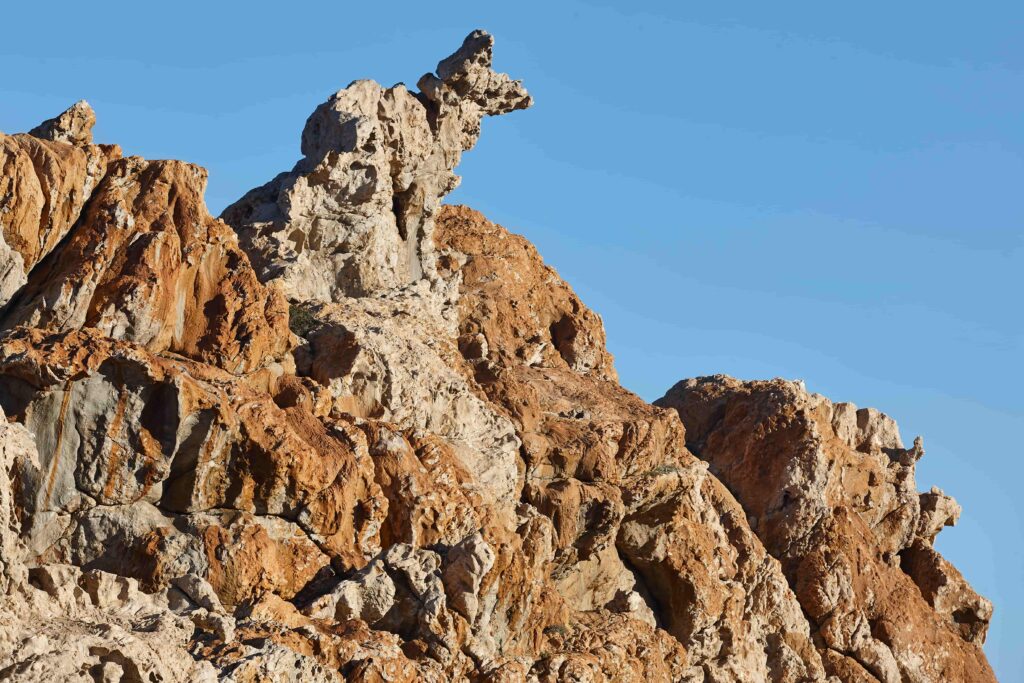
Natural scenery
For nature lovers, we recommend exploring the Aiguamolls del Empordà Natural Park, the second most important wetland in Catalonia. This protected area covers 5,000 hectares between the rivers Muga and Fluvià and is characterised by a remarkable biodiversity of flora and ornithological fauna. The same can be said of Cap de Creus, the easternmost point of the Iberian Peninsula and natural habitat of 300 species of fish; the Medes Islands, a paradise for diving enthusiasts thanks to their ecological value and abundant marine fauna; the lakes of Banyoles and Sils and the massifs of Cadiretes (Tossa de Mar), Montgrí (Torroella de Montgrí) and Les Gavarres (La Bisbal d’Empordà), as well as the Castell-Cap Roig Palamós Natural Park.
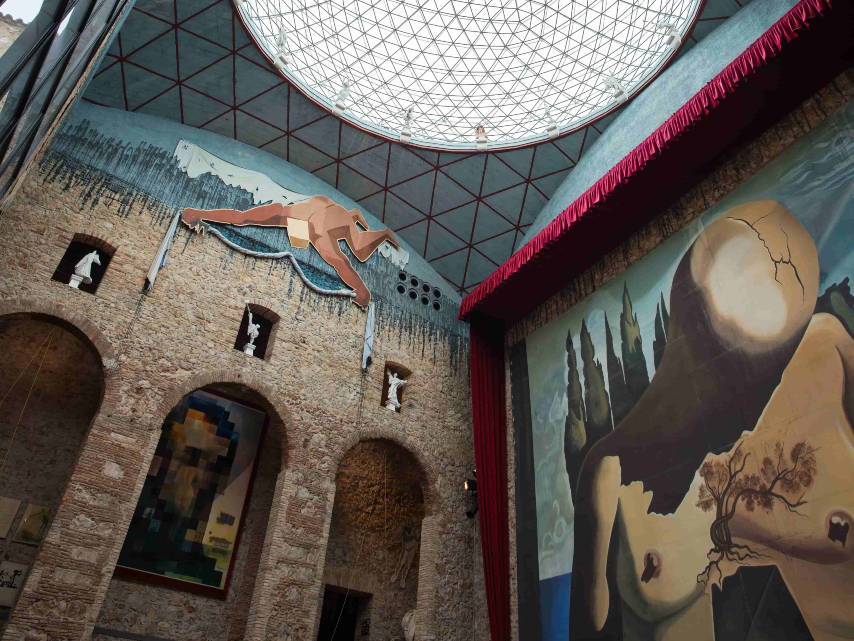
More to see and do
Those interested in local flora can visit the Botanical Gardens of Pinya de Rosa and Marimurtra in Blanes, or the gardens of Cap Roig and Santa Clotilde, located in Calella de Palafrugell and Lloret de Mar, respectively.
Another must-see is Figueres, where the Dalí Theater-Museum is located, dedicated to one of the most celebrated Catalan artists. For those who want to delve deeper into the life and work of the brilliant artist, you can also visit the castle of Púbol where his wife and muse, Gala, lived, and Dalí’s house in Portlligat near the center of Cadaqués.
What to do in the Costa Brava?
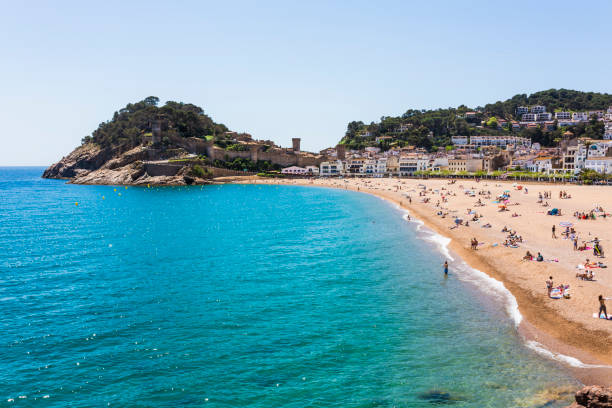
Head to the beach
The beaches of Costa Brava, many of them Blue Flag certified, are an attraction in themselves. There are many peaceful coves with natural sand and calm waters. The rugged and untamed profile of the rocks and cliffs that surround them, as well as the dense pine forests, give the Costa Brava beaches a personality of their own.
Among the main beach destinations on the Costa Brava are the towns of Roses, L’Escala, L’Estartit, Begur, Llafranch, Palamós, Sant Antoni de Calonge, Platja d’Aro, Santa Cristina d’Aro, Sant Feliu de Guíxols, which is home to the only via ferrata by the sea in Europe; Tossa de Mar, Lloret de Mar and Blanes, the latter famous for the Focs de Blanes, a pyrotechnic show that takes place every summer. To this should be added the seaside towns of Cadaqués, Port de la Selva – the only town on the coast of Catalonia that faces north – and Calella de Palafrugell.
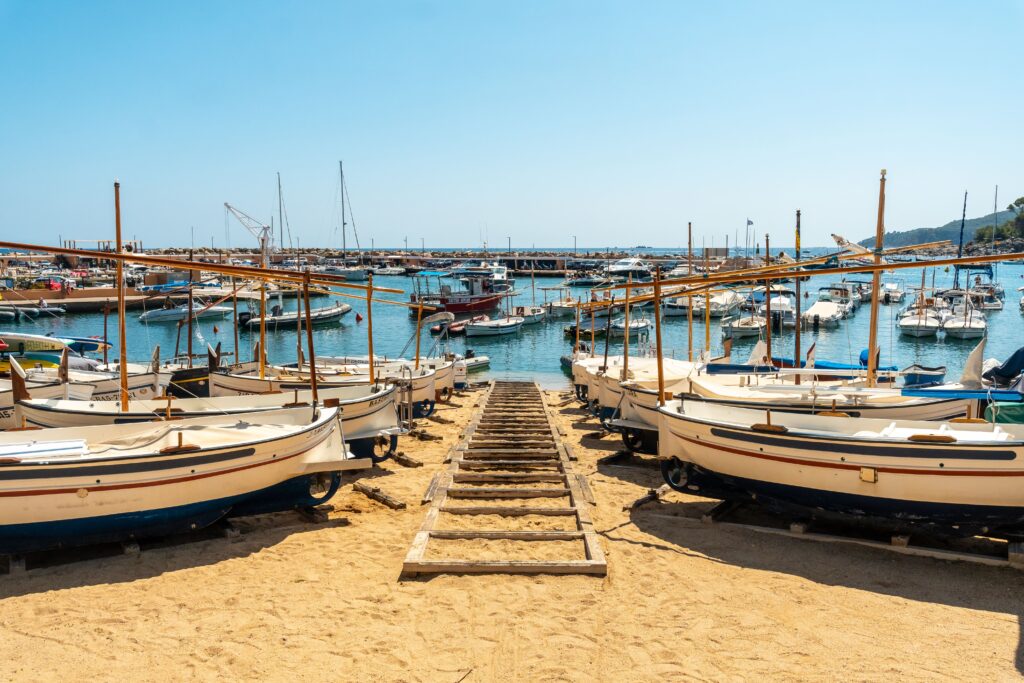
Visit charming coastal towns
It should also be noted that these coastal towns or municipalities are highly equipped for tourism with countless apartments and hotels, a wide range of leisure activities such as water parks for those traveling with children, restaurants, bars, clubs, and more. Most are in Roses, Empuriabrava (known as the Catalan Venice of Catalonia for its canals studded with yachts), L’Estartit, Palamós, Calonge, Platja d’Aro, and Lloret de Mar.Adventure sports and outdoor activities are also gaining ground. A good example is skydiving in Empuriabrava. This town is also home to the Windoor Realfly wind tunnel, the first skydiving simulator to be inaugurated in Catalonia. Going inland, the town of Colomers (near Verges, a village known for its ancient Dances de la Mort) is the starting point for many hot-air balloon rides, which allow you to see Figueres, the Medes Islands, and several medieval villages in the distance.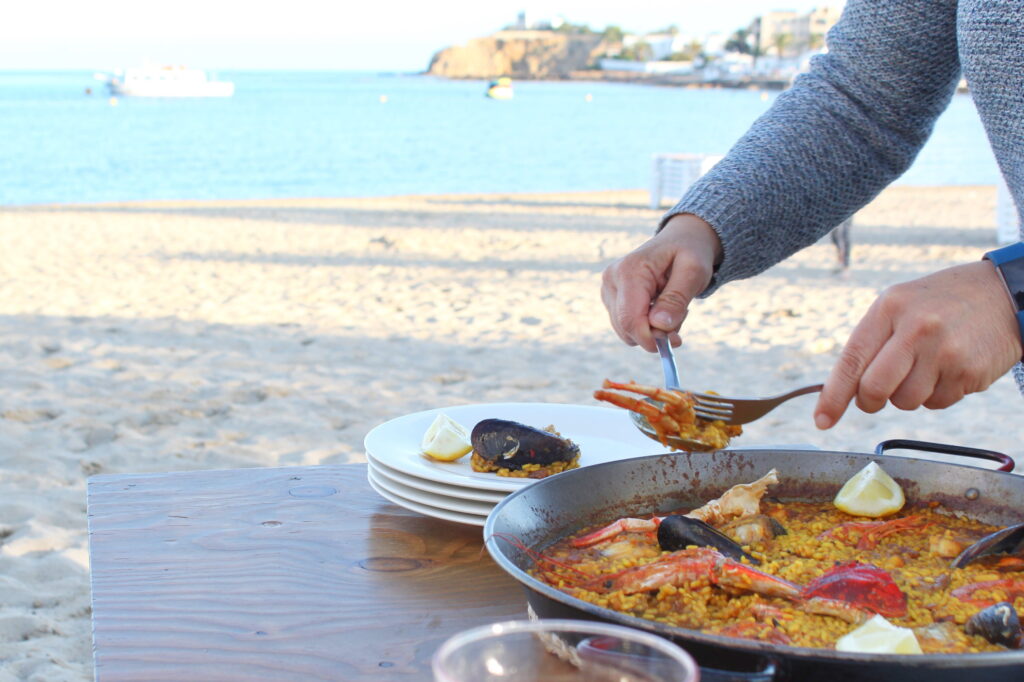
Taste the flavours of Catalan cuisine
In any case, a holiday to the Costa Brava would not be complete without sampling the delights of Catalan cuisine. Experience dishes direct from the sea thanks to strong seafaring traditions in towns such as Portbou, Colera, Llançà, Port de la Selva, Cadaqués, Palafrugell, and Palamós. Among the typical dishes and specialties not to be missed are anchovies from L’Escala, rossejats (a traditional fishermen’s dish made with pasta or noodles and fresh fish and seafood), and the irresistible wind fritters from Empordà, ubiquitous in pastry shops during Lent. Any lunch or dinner should be accompanied by a D.O. Empordà wine, produced with Garnacha grapes. And if you attend one of the habanera concerts organised in summer in Calella de Palafrugell and other coastal towns, there is nothing better than tasting the unfailing rom cremat (burnt rum).

Coastal walks and hikes
It is also possible to go hiking along the Costa Brava, either along the coastal path or following the Via Maritima, one of the branches of the Camino de Santiago in Catalonia. In both cases, the landscapes that can be enjoyed are impressive.
So, don’t think twice! Check out our travel deals on the Costa Brava, book your room within these days, and stay in the type of accommodation that best suits you, whether it’s a bed and breakfast, half board, full board, or an all-inclusive stay. Get ready for a memorable getaway at the best price.



